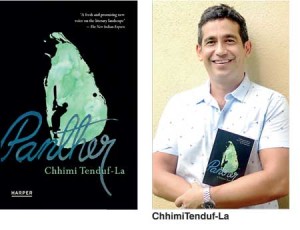An Interview with Jaipur Literature Festival’s Co-Director, Namita Gokhale, on her Latest Novel, Things to Leave Behind
One month before the 10th anniversary of South Asia’s largest and most renowned literary festival, Jaipur Literature Festival founder and co-director Namita Gokhale (with William Dalrymple) sat down with Jaya Bhattarcharji Rose to talk about her latest, and eighth novel Things to Leave Behind. It is a multi-generational story set between 1840-1912 in Nainital and Sat Tal, Kumaon, part of the Himalayas.
How did Things to Leave Behind come about?
A tangle of memories about a time I sensed and knew. I had accessed a rich treasure of information through Mountain Echoes, the book of oral biographies I had compiled and transcribed. Then there was Clever Wives and Happy Idiots, folktales that had been recorded in the memoirs of Russian spy and adventurer, Ivan Minayev, which we at Yatra Books [a Delhi-based publishing house specialising in translations where Gokhale works as director] published and I wrote the introduction to. I wanted to give voice to this, to record and to remember those days, those stories.
In your acknowledgements you mention how this novel was inspired by your grandfather’s text –The History of Kumaon?
I did not have the good fortune to meet Badri Dutt Pande but he was an inspirational figure, who helped rid Kumaon of the infamous British ‘begaari ‘ system of unpaid labour. His book The History of Kumaon, originally written in Hindi with the title Kumaon ka Itihas gave me deep insights into the past.
How much does family and memory, especially of the hills, play a role in your writing? How have those shaped the subjects you write about?
I grew up in a beautiful house called ‘Primrose’, which finds fleeting mention in the novel. Many of the stories and episodes have their source in family history, including the tale of the royal physician Jeevan Chandra Vaidya.
How is writing about the mountains a different experience from writing about anything else —for instance in the context of your other books like the very successful Paro and Priya.
Urban novels have a different edge to them. The city has a very different character and atmospherics from the mountains.
Why adopt the British Raj spelling when the story is told from an Indian perspective?
The story is told from several perspectives. The old ‘Raj’ spellings were in use and authentic to the times, so I used them, especially in the early parts. The language and spellings I employ become slowly ‘modern’ in the course of the narrative.
Your first book was commissioned by the legendary editor, Carmen Calil when she was at Chatto & Windus. This was at a time when it was not so easy to access London-based publishing firms. As a publisher and writer yourself what are the transformations you have seen evolve in publishing?
Publishing has changed in terms of markets. India has its own readers, writers and publishers, and this strong internal market is growing. We are the third largest English publishing market in the world, after the US and UK. My first novel struck a chord and succeeded. I was very young and I learnt a lot, including how to cope with subsequent failures.
Your fascination for literature is evident in the local publishing history of the late 19th century to the early 20th century that you blend into the story. Is this your fascination as an author or a publisher?
I am fascinated by the power of books and ideas, in transforming how every age views itself. I wanted to describe the books people were reading, disputing, talking about. My fascination was as a reader as well as a publisher.
I had spent five weeks at the Bellagio Center [residency program] at Lake Como. I was working on In Search of Sita and also this novel. When I was to leave, I struggled with the packing and made out a list of Things to Leave Behind and realized that this was to be the title of my book.
Things to Leave Behind is a novel that is incredibly powerful in its syncretism. Although there is a thriving and lived caste system in the mountainous regions of Almora and Sat Tal a significant portion of your novel dwells upon the arrival of missionaries of different religions such as Swami Vivekananda and the Baptists. Yet you are able to show how people always find the breathing space to live life according to their terms. Were these manoeuvres by the characters an exciting challenge to write?
The story told itself, the characters made their choices and lived out the consequences. That’s all. There was a ferment of ideas; a conflict of identities, then as there is now.
You have painted an unsettling picture of the hierarchies of the caste system operating in the hills. Can you share a little more about this character – Jayesh Jonas – and where he came from? Do you feel things are different in these societies today?
The caste system was rigid and hierarchical in those times. It has changed, but the attitudes and prejudices cast a long shadow. I was a Pant [part of a compound of a North Indian surname of people with a Hindu Brahmin background] before marriage. Jayesh Jonas was based not as a character but in his situation on a branch of my paternal family tree (that had decided, in very different circumstances, to convert to Christianity).
How have these hills affected you as a writer?
I keep going back to that landscape because somewhere in my imagination it provides immense solace. But that’s not all I write or want to write. Let’s see where my muse guides me next.
What do you feel is the one myth about the hills that people have that you’d like to demystify through your work and writing?
I try always to demythify the false romanticism of the simple hill life. People are complex, complicated and cunning everywhere.
10 December 2016




